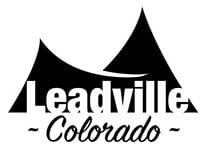
Silverthorne is a relatively young town, but it’s been populated for thousands of years. The area now known as Silverthorne, and Summit County, was the stomping grounds of the Ute people, who dwelled here until white settlement pushed them from their tribal lands. The Ute People arrived around 4,800 B.C. and occupied a vast territory that included much of what is now considered Utah, Colorado and northern New Mexico.
The Ute People came to this region by way of what we now call Vail Pass, living in open meadows where they hunted native game. Archaeologists found tools and other evidence of their existence in 1975, offering clues about a group we previously knew little about, including how they survived in their high country homeland.
Where the River of Blue Rises
When the Ute People descended Vail Pass into Ten Mile Canyon, they set up camp in the Blue River Valley on land they called “Nah-oon-kara,” which roughly translates “where the river of blue rises.” Worth noting is that part of the Salt Lick Trail System carries this name. In this region, the Ute People thrived on an abundance of trout, bison, elk, antelope, mountain sheep, deer, beaver, bear, rabbit, squirrel, and grouse.
Tribal throughways have become some of our modern-day highways. What is now I-70 was then an important migratory route for the bison herds that the Ute followed from summer to winter. Their tribes used fire to encourage growth of the shorter grasses preferred by bison, and helped create conditions for today’s lodgepole pine forests.
Over time and as European presence grew, the Ute People were among the first indigenous groups to acquire and master the horse, which became vital to their culture and success. Throughout the early nineteenth century, Ute bands (a band was a small, egalitarian, kin-based group), reaped the benefits of trade and were able to maintain their lands with minimal impacts from white expansion. This changed following the United States’ victory in 1848 in the Mexican-American War. A series of treaties and land cessions forced the Ute People into even smaller territories. During the late 1800s, much of the area’s Indigenous population suffered frustration and tragedy as they were forced from their lands and made to adjust to difficult and unfamiliar lands on reservations, in response to the Colorado Gold Rush of 1858-59 and to make room for white homesteaders. Though the Ute people have lived on to nurture their culture and traditions as they are celebrated today, little remains of their presence in Colorado as a result of being driven from the region and their lands.
Honoring our history, the land and its people

Recently, the Town of Silverthorne Art Board commissioned a mural at Rainbow Park, by artist Danielle SeeWalker, a citizen of the Standing Rock Sioux Tribe of North Dakota, who describes her mural as a mountain scene that is personified into Grandmother Earth. She honors the grandmothers and grandfathers who have safeguarded these lands with a land acknowledgement to the Ute Tribe, inscribed on the mural.
Indigenous Peoples’ Day, October 11, provides an opportunity to reflect upon how we celebrate and study American history. This day has long been recognized as Columbus Day to commemorate the anniversary of Christopher Columbus’s landfall in the Western Hemisphere. However many have long protested the holiday due to the violence, deaths and forced assimilation of survivors during and after colonization. Increasingly, states, cities, and communities across the U.S. are observing Indigenous Peoples’ Day to celebrate and respect Indigenous rights and history.
For those seeking to learn more about, and celebrate Indigenous People and culture, this weekend the community of Boulder will celebrate its inaugural Indigenous People’s Day Festival. Danielle SeeWalker, who created the mural in Rainbow Park, is one of its organizers and is working with the Native American Arts Collective to highlight and support Indigeous artists from traditional to contemporary. There will be an arts market, dance performances, fashion shows, a film festival and more. Visit their event website to learn more.
Sources: History Colorado, Summit Daily News, The Smithsonian Institution
The post Spotlight: Colorado’s original inhabitants appeared first on The Silverthorne Pulse.
This content was originally published here.

